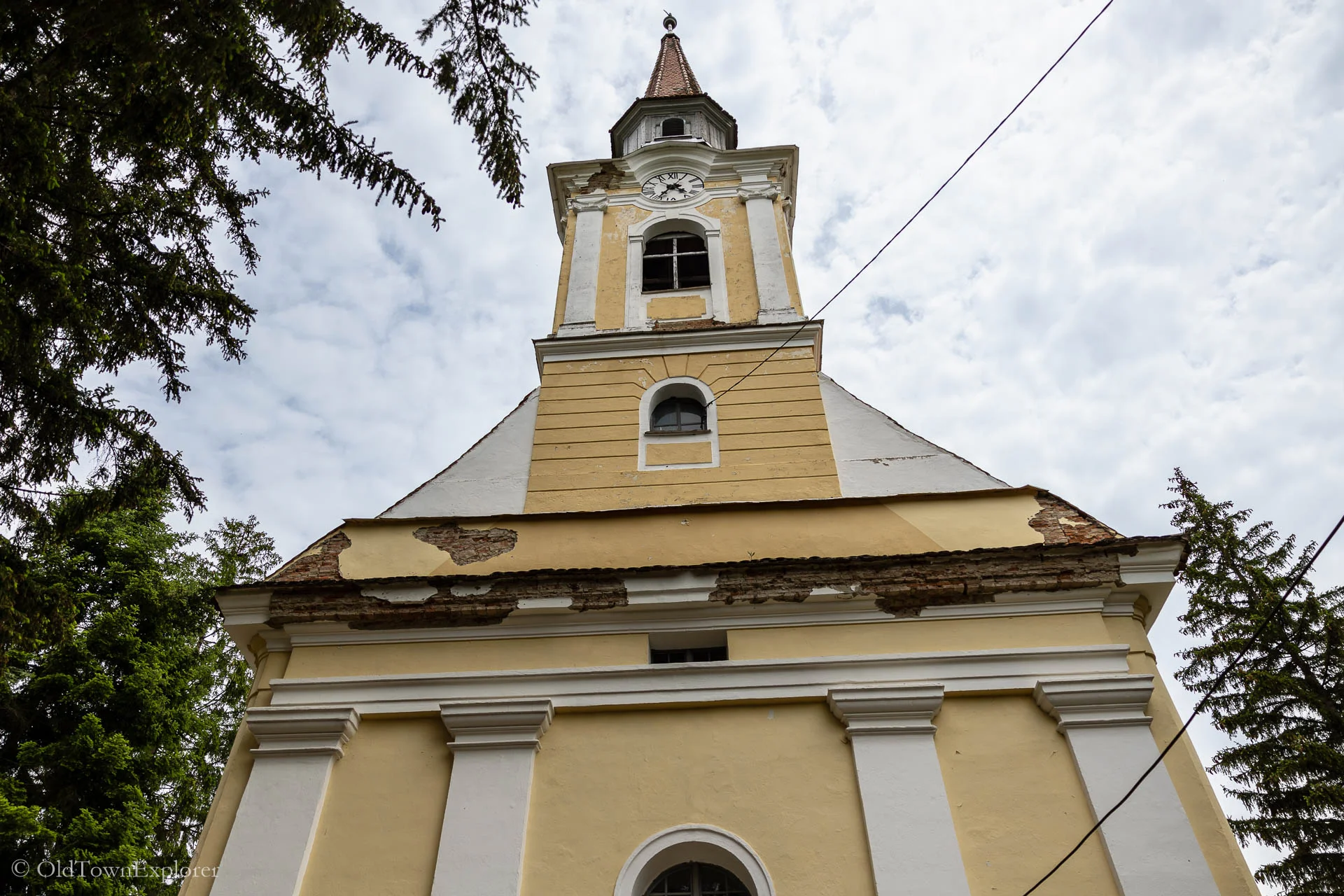Discover Crit Fortified Church: History, Architecture & Visitor Information
The village of Criț in Transylvania is home to a fortified church that reflects the Saxon heritage of the region. Built for both worship and defense, the church retains its original fortification system, which once protected villagers from invading forces. Inside, you’ll find preserved frescoes, decorative altars, and elements that speak to its role as both a spiritual and communal stronghold.
During our stay in Sighisoara, we visited Criț to explore the church’s defensive walls, architectural details, and its ongoing cultural role within the community. This guide covers the history, key design features, and practical tips for planning your visit to Crit Fortified Church.
This website contains affiliate links that may earn us a small commission at no additional cost to you.
History of Crit Fortified Church
The Crit Fortified Church holds historical significance worth exploring. With its 16th-century bell tower adding charm to the church, visitors can admire the architectural skills of the Transylvanian Saxons who built it. Don’t miss the opportunity to walk along the ring wall on the western side and marvel at the Gate tower, a 15th-century masterpiece welcoming visitors to the village of Crit. For breathtaking panoramic views of the village, make sure to climb up the Fifth tower among the defensive towers.
In the Middle Ages it was the property of the Cârta Monastery. The first documentary evidence dates from 1270-1272. On the site of the current church there was an old church, made of stone, documented for the first time in 1270.
The old church was demolished in 1810 and 1814, the construction of the current church began, in neoclassical style. In the church there are chests dated 1666 and 1724. The painted pews date from 1793. The years 1549 and 1551 are inscribed on the bells.
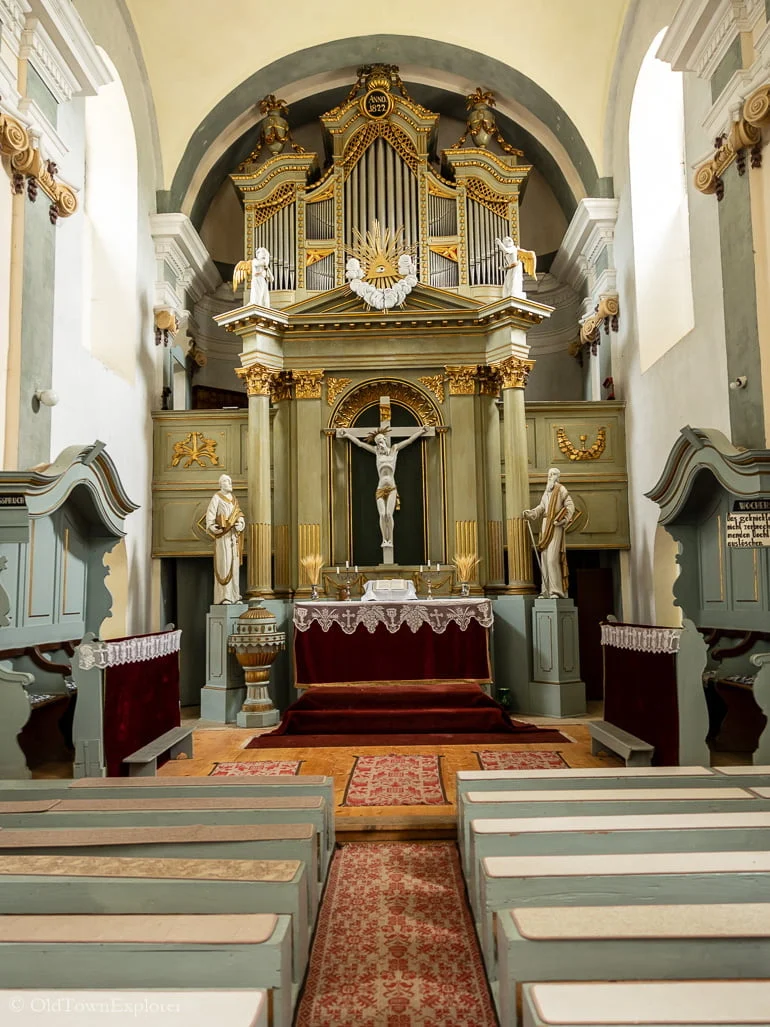
Religious Significance
Immerse yourself in Crit Fortified Church’s classical hall church design, which dates back to the 14th century. The altar, a masterpiece of craftsmanship, highlights the church’s religious importance, while the pulpit symbolizes spiritual guidance. The church’s bell, known as the Kennel, rings through the village, calling the faithful to worship. Adjacent to the church is a peaceful retreat for spiritual contemplation, the monastery. Discover the religious significance of Crit Fortified Church and experience its rich history.
Architecture of Crit Fortified Church
Marvel at the impressive fortification wall, a defensive structure dating back to the 13th century. Step inside the church and be captivated by the exquisite frescoes that depict biblical scenes. The altar, sculpted with intricate details, showcases the church’s artistic brilliance.
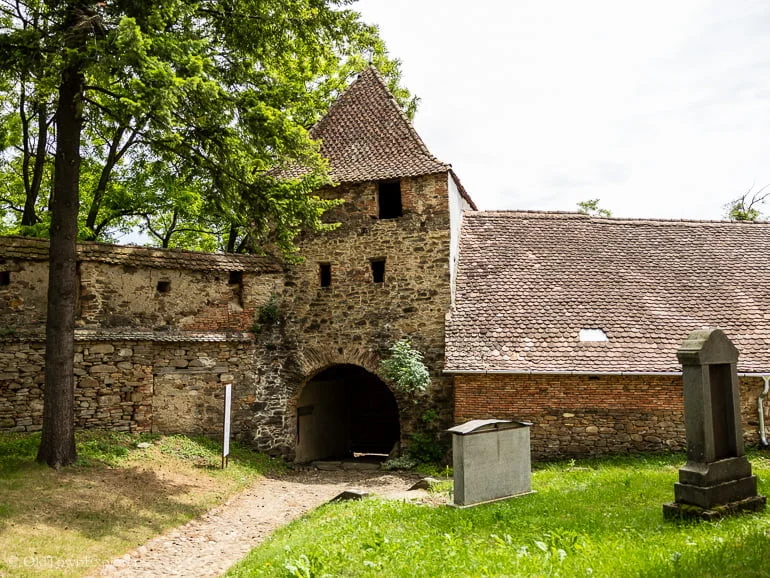
Fortifications
Explore the Crit Fortified Church’s unique fortification system that showcases its rich defensive history. Discover the strategically placed defensive towers along the fortification wall, providing a glimpse into the village’s past. Don’t miss the western tower, offering panoramic views of the picturesque village and surrounding landscape. Learn about the 19th-century modifications that enhanced the fortification system. Marvel at the gate tower, an architectural gem, and take a walk along the ring wall, a testament to Crit’s fortified heritage.
The towering fortified wall, reaching an impressive height of 8 meters, proudly showcases its defensive prowess. Though once adorned with five defensive towers, only four remain standing today, each one a stalwart guardian of the church’s past.
Although only four defensive towers remain today, their presence is enough to transport you back in time. Each tower bears witness to the village’s tumultuous past, silently narrating stories of battles fought and lives defended. As you approach them, you can’t help but feel a sense of awe at their sheer magnitude. Standing against the ravages of time, these towers have served as sentinels, watching over the village and its people for centuries.
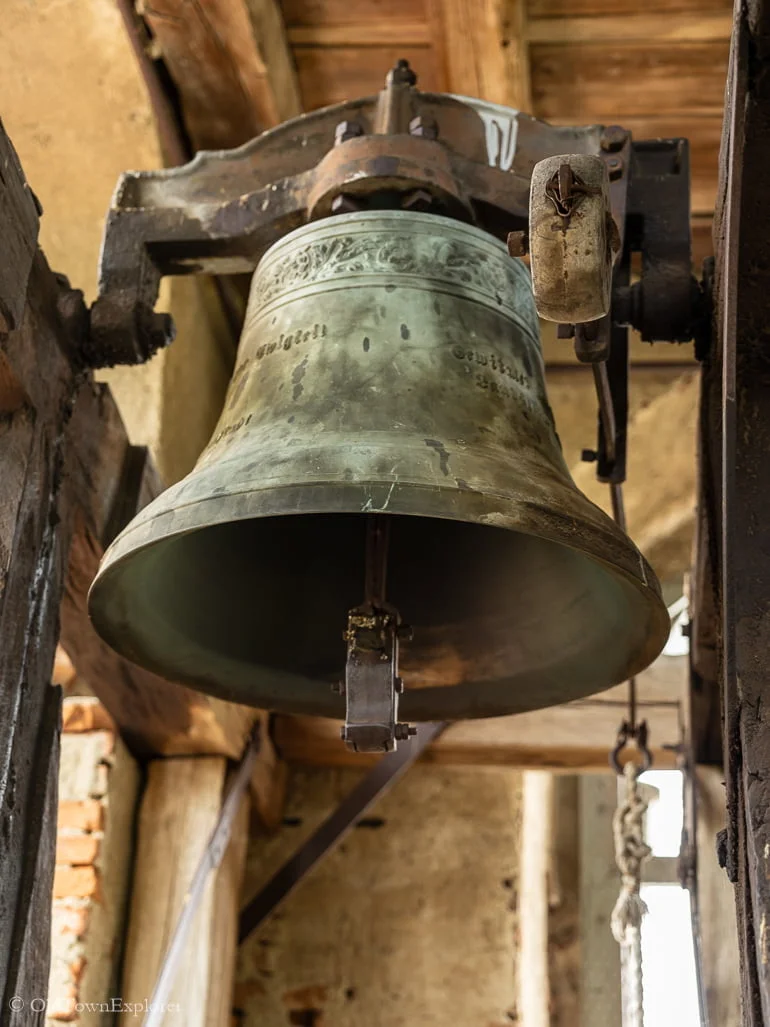
Bell Tower
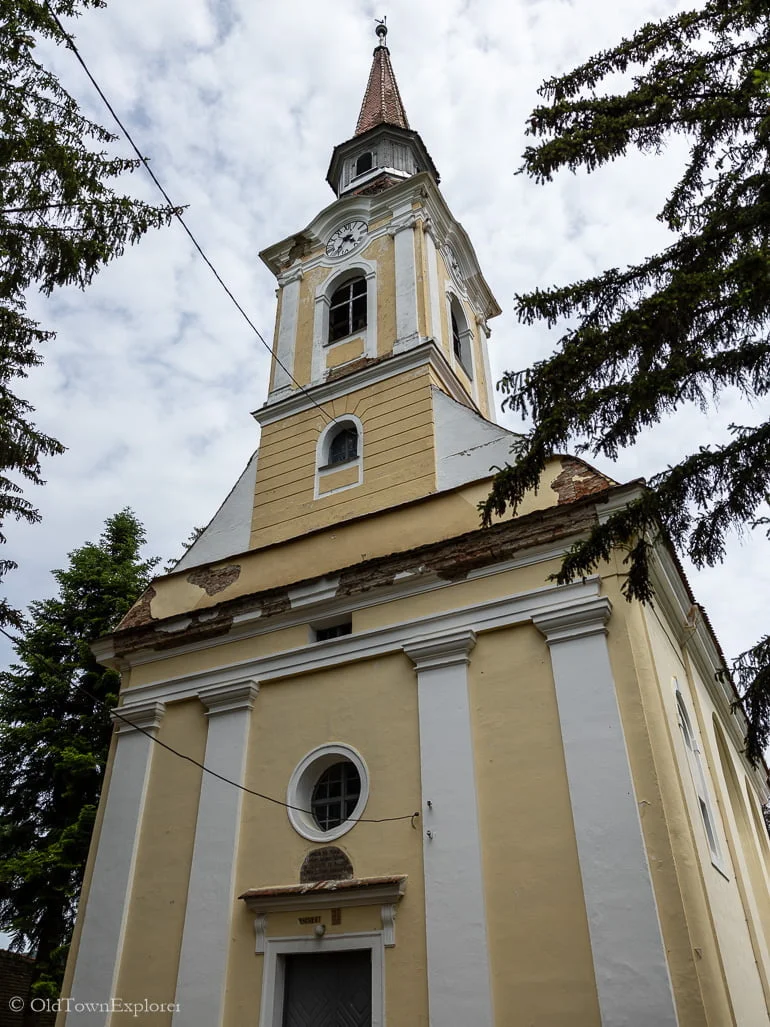
Church Exterior
As you step inside the defensive walls of Crit Fortified Church, you’ll be greeted by the breathtaking church that stands as a testament to the village’s history.
It is estimated that construction of the fortified church began in the 16th century. The mediaeval church inside the fortified walls was however demolished in the year 1810 and replaced by a classical hall church.
While the fortified church itself has undergone transformations throughout the centuries, its exterior still exudes an aura of strength and resilience. The towering walls stand tall, reminding all who lay eyes upon them of Crit’s historical significance as a bastion of defense.
The intricate stonework that adorns the exterior of the church is a testament to the craftsmanship of the past. Delicate carvings depict scenes from local folklore and biblical tales, their details weathered by time but still visible to those who take the time to admire them. The church’s facade, with its grand arches and ornate stained glass windows, beckons visitors to step inside and experience the spiritual sanctuary within.
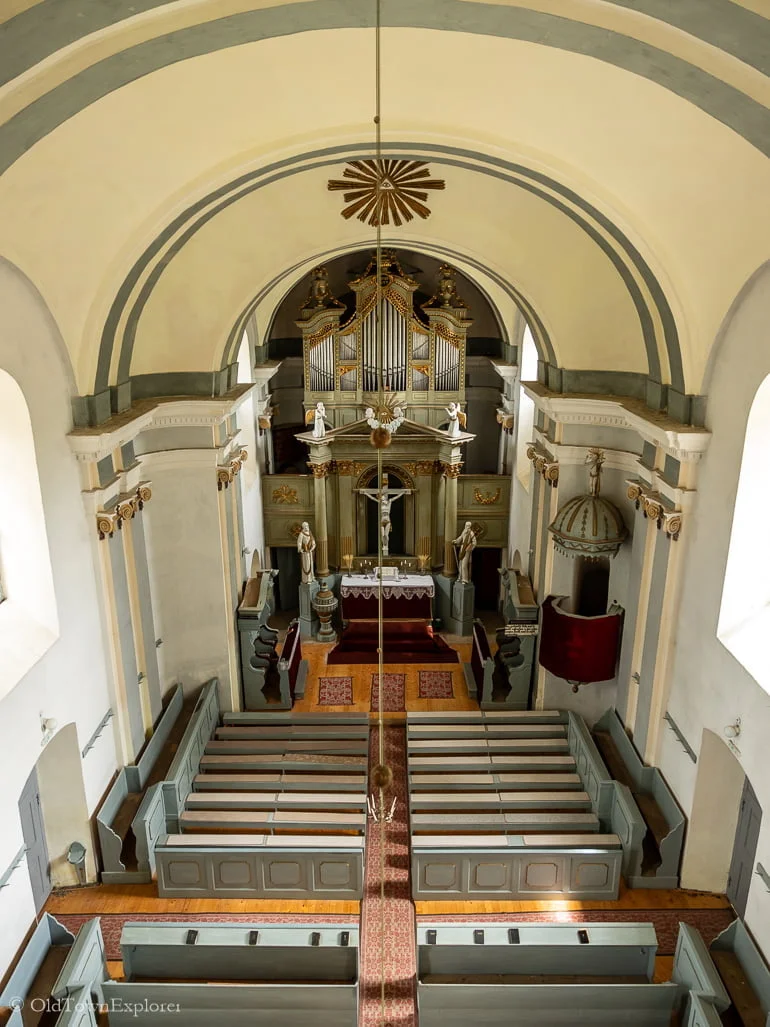
Church Interior
Step inside the Crit Fortified Church to be greeted by a mesmerizing display of frescoes. These vibrant paintings beautifully depict religious stories, adding a touch of spirituality to the surroundings. As you explore further, the intricately carved altar captures your attention, adorned with religious symbols that hold deep meaning. Don’t miss the pulpit, an elevated platform used by the clergy during services.
Hotels near Crit
There are a few hotels near Crit. Because of their low number, most people stay in Sighisoara or Brasov and take a tour to Crit. The castle marker on the map below is Crit Fortified Church. You can change the dates, set your preferences, and zoom in and out to explore the area hotels.
How to Reach Crit Fortified Church
Private Tour to Crit
Here are some great options for a private tour to Crit! In addition to the options below, we have used GetTranfer to book private transfers and recommend it as well.
By Car
If you travel by car, Crit is 32 km (21 miles) from Sighisoara, 123 km (76 miles) from Sibiu, and 86 km (53 miles) from Brasov.
Public Transportation to Crit
The nearest train station is in Rupea. From there, it’s 22 km (14 miles) to Crit.
Visiting Crit Fortified Church
The Saxon fortified church of Crit is located on a hill in the north-west corner of the village.
Ticket Office
There is no ticket office for the Crit Fortified Church.
Like most of the other smaller fortified churches in the area, the Saxon fortified church of Criț is usually closed which means you need to find the keyholder in order to visit it.
The phone number of the keyholder is posted at the entrance of the church.
Entrance Fee
The entrance fee is around 10 RON per person.
Visiting Crit Village
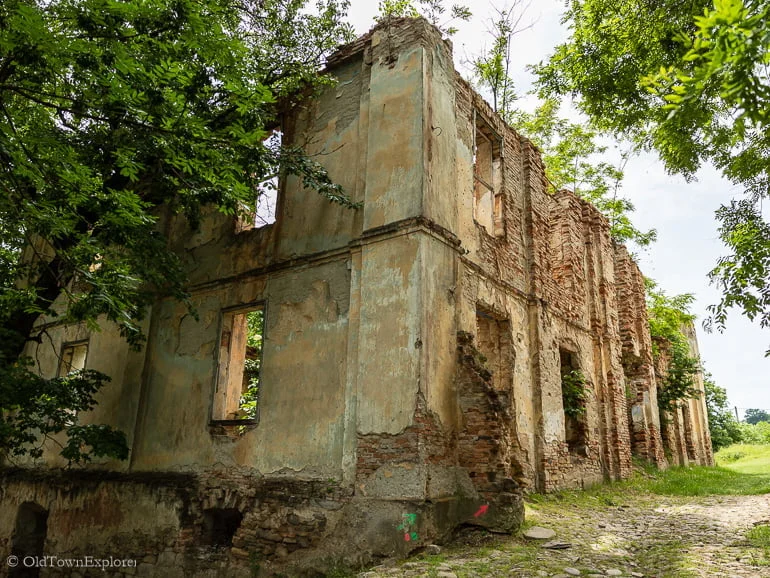
Village School
Take a moment to explore the ruins of the Saxon village school just beyond the protective embrace of the fortification walls. Though time has taken its toll on this building, its dilapidated state speaks volumes about the village’s educational heritage. Imagine the echoes of children’s laughter that once filled these walls, as they eagerly absorbed knowledge and embraced the opportunity for a brighter future.
Outside of the defensive walls you can also find a ruined building which once was the Saxon village school of Crit.
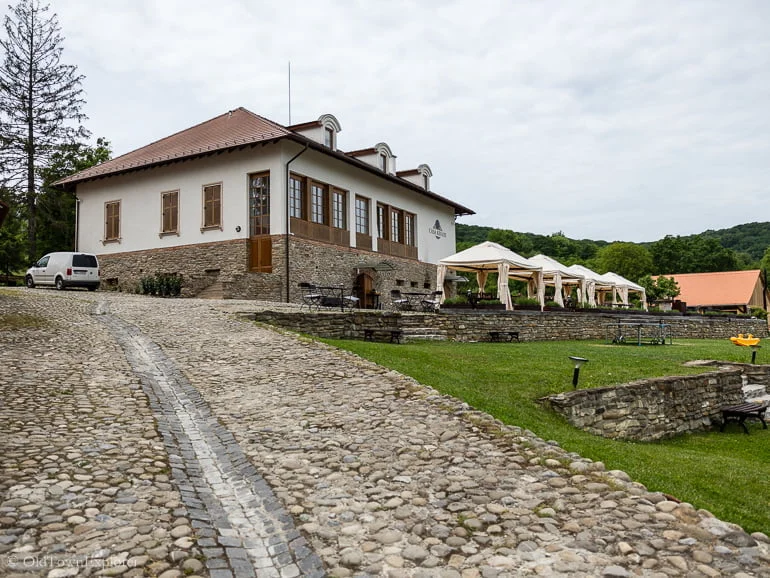
Casa Kraus
Casa Kraus is a very, very nice guest house located just outside the walls of the fortified church. The guest house is also the caretaker of the church. If the gate or door to the church is closed, check with the desk at Casa Kraus. When we arrived, the main gate to the church fortifications was locked, but up the hill there is a second gate that was open. Also, the church door was open and we could go inside on our own without chaperone or entry fee. There are steps at the rear of the church that lead to the balcony where you can get a good view of the church, another set of steps (behind a closed door) on the first level (second level for americans) leads up to the attic where you can see in the space above the ceiling, and, finally, another set of steps leads up to the bell tower.
The walls have coverings and spaces on the interior that can be seen from walking around the outside of the church.
Casa Kraus appears to serve food, but there does not seem to be other food options available.
Tips for Visiting Crit
When visiting Crit Fortified Church, it’s important to keep a few things in mind to make the most of your experience.
Check the Opening Hours
Be sure to check the opening hours of the church beforehand as they can vary.
Check the Weather
When planning your visit to Crit Fortified Church, it’s important to check the weather forecast and dress accordingly.
Plan Ahead
Plan ahead and familiarize yourself with essential information about the village and church to make the most of your time there.
Take a Stroll
While exploring Crit village, take the time to stroll along its charming streets and soak in the peaceful atmosphere. Admire the traditional Saxon houses with their colorful facades and well-preserved architecture. Immerse yourself in the local culture by visiting the artisans’ workshops where you can witness traditional crafts being practiced.
Wear Comfortable Shoes
Don’t forget to wear comfortable shoes as you explore the village and church.
Try the Local Cuisine
Before leaving Crit, don’t forget to indulge in some local cuisine. Taste traditional dishes made with fresh ingredients sourced from the surrounding farms and gardens.
FAQs About Crit
How Many Churches are in Transylvania?
Transylvania is home to numerous churches, each with its own unique history and architectural style. While it is difficult to provide an exact number, some estimates suggest that there are over 200 fortified churches in Transylvania alone. These churches not only serve as places of worship but also stand as testaments to the region’s rich cultural heritage and historical significance. From Saxon fortified churches like the one in Crit, to Gothic masterpieces like the Black Church in Brasov, Transylvania’s churches offer visitors a glimpse into the region’s past and a chance to connect with its spiritual traditions.
Why Were Churches Fortified?
The fortified churches of Transylvania are a unique aspect of Romania’s historical significance. The churches were fortified with walls and towers to ward off Tatar invasions, and they are still impressive to this day. Crit Fortified Church is one of the many churches in Transylvania that still stands today. It is a beautiful example of Gothic architecture and has been fortified since the 14th century. Its fortified walls and towers make it stand out among other churches in the region, making it a must-visit for tourists looking to explore the history of Romania.
served multiple purposes throughout history. One of the main reasons was to protect the local communities from frequent invasions and raids. During the Middle Ages, Transylvania was located at the crossroads of several empires and faced constant threats from Ottoman and Tatar invasions. Fortifying churches provided a means of defense for the villagers, as they could seek refuge within the fortified walls during times of danger.
Other Villages with Fortified Churches in Transylvania
There are over 200 fortified churches in Transylvania. Some of the best include:
- Alma Vii
- Biertan
- Cloasterf
- Copsa Mare
- Crit
- Darjiu
- Malancrav
- Mosna
- Richis
- Saschiz
- Valea Viilor
- Viscri
For more information, check out our article Explore Villages with Fortified Churches in Transylvania with suggested day trips from Brasov and Sighisoara.

